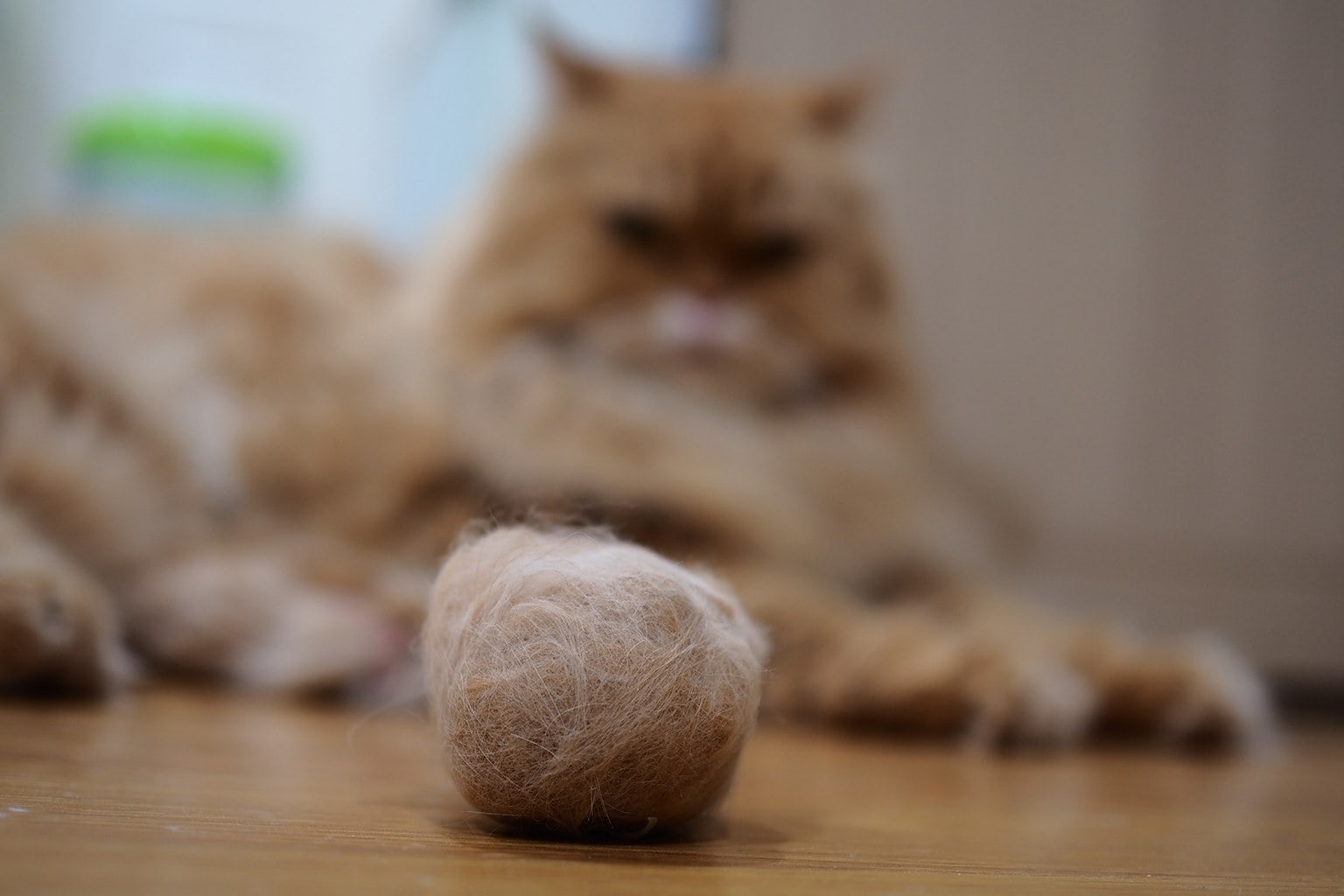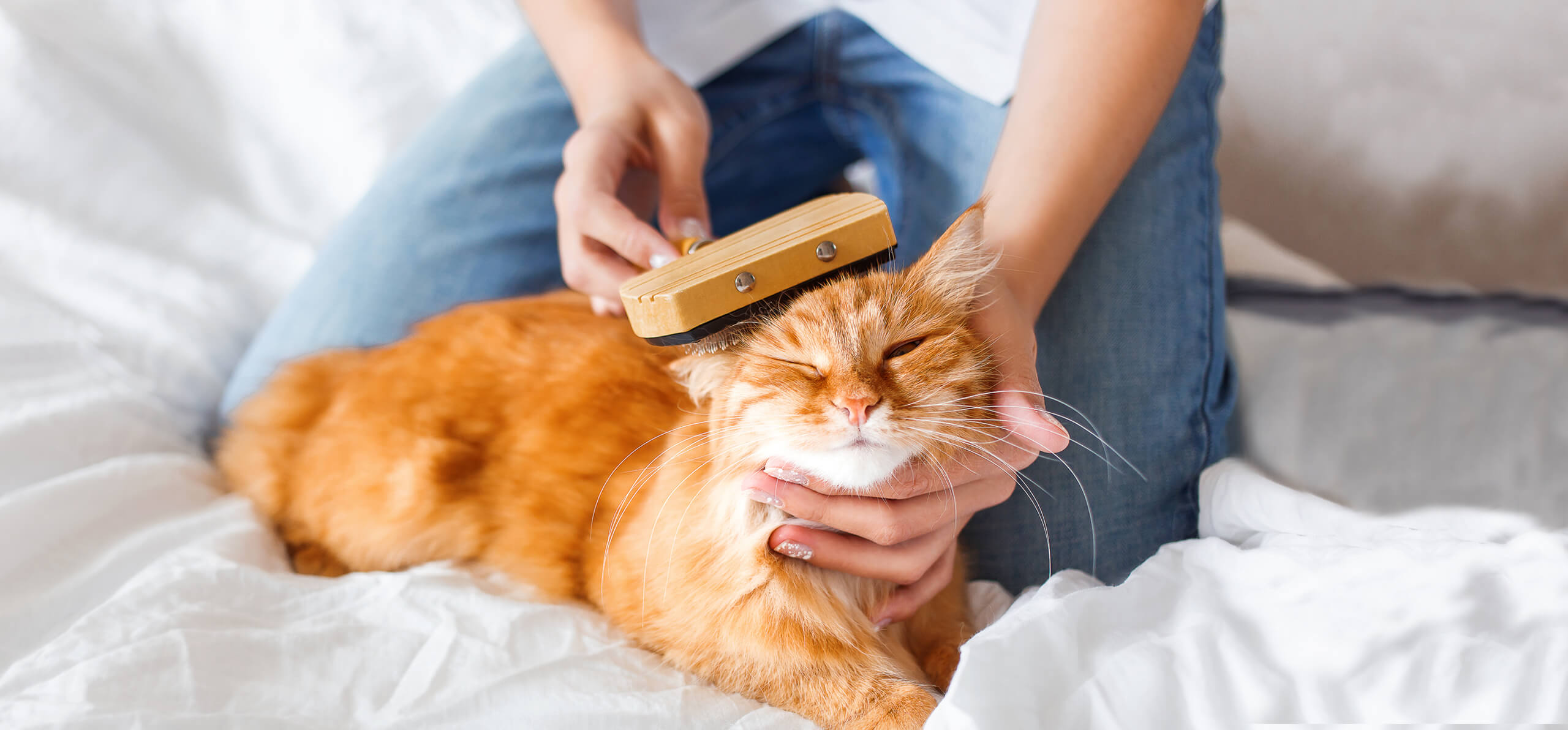Cats are famously meticulous groomers, but this behavior can lead to one of the more unpleasant and perplexing feline issues: hairballs. This guide delves into the science of hairballs for cats, explaining how cats form and regurgitate hairballs, what they look like, why they form in the stomach, and how effective cat hairball control works. You’ll also find recommendations for Cat hairball treatment and practical steps for hairball control in cats, with trusted guidance from Alvid Pet.

1. How Hairballs for Cats Form
Grooming occupies up to 25–50% of a cat’s waking hours, during which the backward-facing papillae on their tongue capture loose hair and move it to the back of the mouth. This hair is swallowed and accumulates in the stomach, where it may eventually form a hairball in cats stomach—a dense trichobezoar composed of indigestible keratin.
When ingestion exceeds digestive clearance—common in long-haired breeds or during heavy shedding—hair accumulates faster than it can pass into the intestine. Altered gastrointestinal motility, due to stress, pain, or underlying GI disease, also impairs clearance, increasing risk .
2. What Do Hairballs in Cats Look Like?
What do hairballs in cats look like? Typically, expelled hairballs resemble elongated, cylindrical masses—often called “cigar-shaped” or sausage-like—about 1–5 inches long and roughly an inch thick. They usually match your cat’s coat color, mixed with hints of gastric juices and bile, and emit a mild but unpleasant odor.
When still in the stomach, hairballs tend to be rounder and more compact—comparable to a rolled-up sock or sponge shape. On unsuccessful expulsion, these may lead to serious digestive issues
3. Normal vs. Problematic Hairballs in Cats
Occasional hairball regurgitation—perhaps once every week or two—is generally normal behavior, especially for long-haired cats. However, frequent or persistent hairballs may indicate hairball control in cats that is inadequate or an underlying issue.
Cats that vomit hairballs often may have digestive motility disorders, excessive grooming due to skin disease or fleas, or issues like inflammatory bowel disease. Frequent hairballs can also lead to colitis or even obstruction, necessitating veterinary evaluation.
4. Why Hairballs Can Be Dangerous
While most hairballs pass without issue, complications can be serious. A hairball unable to exit the stomach may harden or move into the small intestine, causing partial or complete blockage. This can result in vomiting, loss of appetite, lethargy, and abdominal discomfort—and may require surgery .
Other risks include oesophageal entrapment causing inflammation or stricture. Even hairballs that remain in the stomach can trigger gastrointestinal distress and secondary health problems.
5. Cat Hairball Control: Preventive Strategies
Frequent Grooming
Regular brushing removes loose hair before ingestion. Long-haired cats benefit from daily grooming, while short-haired breeds still require weekly brushing. Clipping or lion cuts may help in extreme shedding periods.
Dietary Fiber & Hydration
Including fiber sources—like small amounts of canned pumpkin or specialized hairball diets—can support gastric motility and help move ingested hair through the digestive tract. Ample water intake further supports normal passage.
Cat Hairball Treatment Options
Mild lubricants such as petroleum-based gels (e.g. mineral oil pastes) are used to ease hairball passage by coating ingested hair. These often have added flavor to encourage consumption .
Enzyme Supplements
Digestive enzymes like protease may help break down small hair particles, reducing accumulation and promoting smoother transit. These require veterinary approval.
Fiber and Probiotic Supplements
Prebiotic fiber (like FOS or MOS) and gut-supportive supplements improve gut motility and reduce inflammation that may contribute to frequent hairball formation .
6. Cat Hairball Treatment: What Works?
Approved veterinary gels or pastes act as mild laxatives that lubricate hair and help it move through the digestive tract safely. For example, a weekly dose can help prevent accumulation during heavy shedding reigns .
Alternate treatments include fiber chews or treats designed to support digestion and skin health. These should be used per veterinary guidance and may not suit all cats equally .
7. Monitoring and When to See a Vet
You should consult a vet if your cat experiences:
- Repeated hairball vomiting more than once every couple weeks
- Signs of lethargy, lack of appetite, or abdominal pain
- Infrequent defecation or constipation
- Weight loss or digestive upset
These signs may indicate hairball obstruction or other GI diseases requiring medical attention.
8. Summary of Hairball Control in Cats
Strategy | Benefit |
Frequent grooming | Reduces ingestion of loose hair |
Fiber-rich diet | Promotes digestive motility |
Lubricant gel treatments | Eases hairball passage |
Enzymes or prebiotics | Supports gut health |
Veterinary guidance | Tailors treatment to individual needs |
These combined strategies form the backbone of effective cat hairball control and Cat hairball treatment planning.
9. Scientific Insights: Why Some Cats Form More Hairballs
- Grooming behavior: Cats spend substantial time grooming, swallowing up hair in the process. Long-haired and overgrooming cats are especially vulnerable.GI motility: Underlying conditions or stress may impair digestion and clearance, causing hair to accumulate faster than it can be passed.
- Gut microbiome imbalance: Dysbiosis can reduce motility and digestion, indirectly feeding into the hairball cycle.
10. How to Get Rid of Hairballs for Cats Effectively
Proper how to get rid of hairballs for cats includes:
- Groom your cat regularly to limit ingested fur
- Provide fiber and hydration to support digestionUse veterinarian-approved hairball gels or pastes as needed
- Monitor frequency and behavior
- Use dietary supplements or probiotics under vet advice
- Seek veterinary care if hairballs persist or signs of GI distress occur
This approach helps minimize the need for emergency intervention and keeps your cat comfortable.
Conclusion
Understanding the science of hairballs—from ingestion in the stomach, regurgitation reflex, to potential risks—is crucial for any cat owner. Knowing what hairballs in cats look like, recognizing normal vs. problematic frequency, and implementing targeted cat hairball control strategies significantly improves feline comfort.
Effective Cat hairball treatment includes a combination of grooming, diet, fiber, hydration, veterinary supervision, and appropriate gel/paste use. Consistent monitoring and early intervention reduce risks and help your cat maintain digestive health.
Your cat deserves the best path to comfort and wellness—regular hairball management supports that journey. Trust in expert guidance and proactive care.
